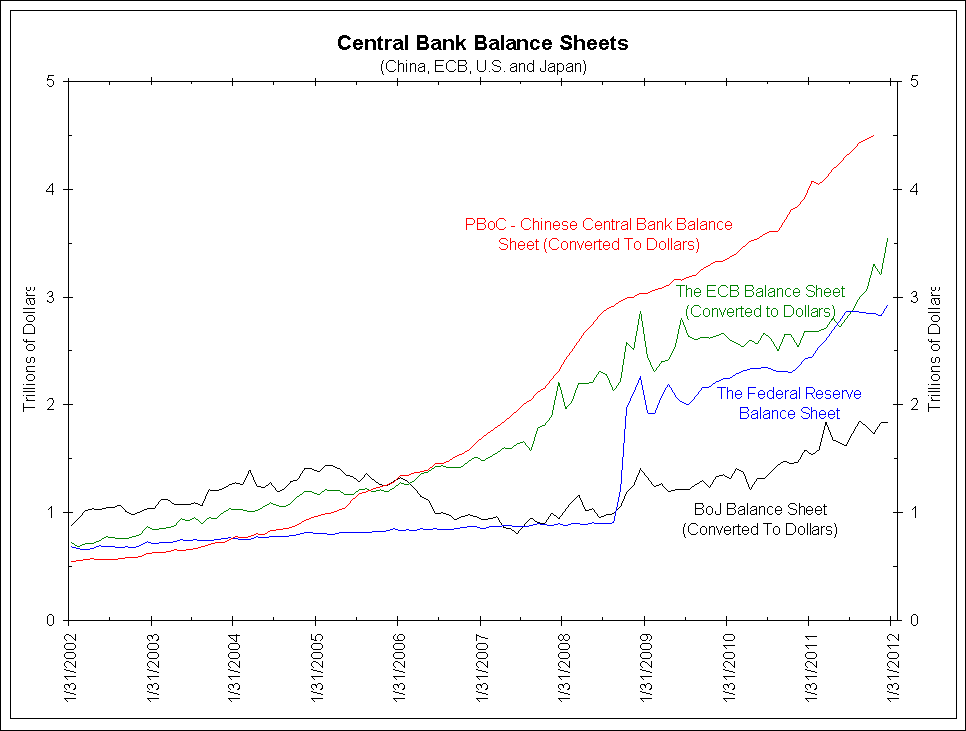| The fiat currency printing press continues to roll out more money through QE |
So, with all of that new fiat currency created through QE, why have we not seen sky high inflation yet? The reason we have not seen high inflation is that people and businesses are still squirreling away Pounds, Euros and dollars because they remain anxious worried about the prospects for the economy.
Sooner or later, however, the Federal Reserve and other western central banks will have created so much new paper fiat currency through QE that at that point, the urge to buy – whether it's capital goods or consumer goods or commodities – will revive the economy, and the recession will come to an end. That will reduce the level of caution people feel to something near normal. The result will be that all of the excess money that has been created since 2008 will come pouring out. For a little while it will look like everything is going well – the economy will seem to be booming, we can all go back to our old ways. But then the extra printed money will set off massive inflation, and then the good times will be over. When that day comes, make sure you have some amount of real asset investments such as forestry or farmland in your portfolio as a hedge.
Contact us at info@greenworldbvi.com t learn how we can protect you from the dangers of QE and the ravages of inflation.







.png)

